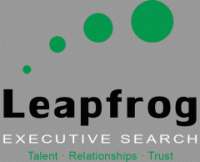The Importance of White Space
Category : 2018
How much does your life resemble a webpage designed by an amateur? Competition, short attention spans, distractions, and the fear people won’t stay on a page compel inexperienced web designers to fill every available inch of screen space with content. Parallel factors push executives to fill their lives in a similar way.
Experienced designers know effective design balances images, graphics, or text (positive elements) with white space (negative elements) to ensure the important isn’t crowded out by the insignificant.
White Space
Makes it easier to call attention to what is important.
Keeps the unrelated separate.
Engages people more fully.
Creates balance.
White space does for design what white space does in an executive’s life. It creates the room needed to ensure balance, keep the focus on what’s important, and it allows the executive to fully engage with life. Too much white space and we become inefficient and scattered. Too little white space and we follow Henry Kissinger’s playbook when he said, “There cannot be a crisis next week. My schedule is already full.”
The early days of a new year are often marked by commitments, resolutions, and promises to do more, not less. Maybe the key to a more productive 2019 is planning as seriously for what you won’t do as for what will receive your time and energy.
An executive finds desperately needed white space in life the same way a designer creates white space on a page.
Be deliberate.
Designers know white space is created as deliberately as every other element on a page. Good executives engage with a broad spectrum of people and absorb huge amounts of information every day. They are expected to do that, and it takes time-a lot of it. The most effective executives have developed the maturity to no longer evaluate their worth by how many appointments are on a schedule or how many meetings they attend. Their sense of who they are is secure, so they judiciously choose what gets onto the calendar. They naturally create white space by ensuring that purpose determines priorities. They are comfortable saying, “I’m sorry, that time on my calendar is already filled (with white space),” and they offer no explanation or excuse.
Figure out what is primary and keep it that way.
Good designers determine the principal element on a page and they use white space to keep that importance clear. Executives short on white space often haven’t given up trying to prove they can be good at what they aren’t good at. The best leaders have dropped the ruse of omnicompetece and they target their energies toward leveraging strengths, not compensating for gaps.
Use spacing and padding.
Designers know text needs spacing and images need padding-extra room that allows a word or picture to do its work. Knowing a day rarely unfolds as anticipated, a wise executive wanting to maximize his/her impact creates margins of space around important events in a day that allow the leader to mentally shift from one topic (or decision) to another. We gain clarity in decision-making when we aren’t peering through the lingering fog of a previous meeting.
Replace borders with color.
From our first experience with a crayon to learning to drive a car we are told to “stay in the lines.” Many executives advance to senior levels “staying in their lanes” and believing the expertise they developed early in a career will ensure success at higher levels of responsibility. Borrowing from Marshall Goldsmith, “What got you here, won’t get you (or make you successful) there.” Forward-thinking executives recognize that lasting career growth demands no longer operating within the staid border of expertise and leveraging white space to make time to interact with a broad spectrum of people and ideas in the unpredictable color of relational engagement. White space in a life creates white space in the mind where thoughts are challenged, new options are considered, and innovation proliferates.
Jan Tschichold, a pioneer in the world of graphic design was right. “White space is . . . an active element, not a passive background.”
